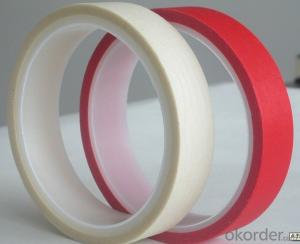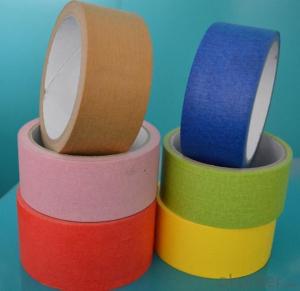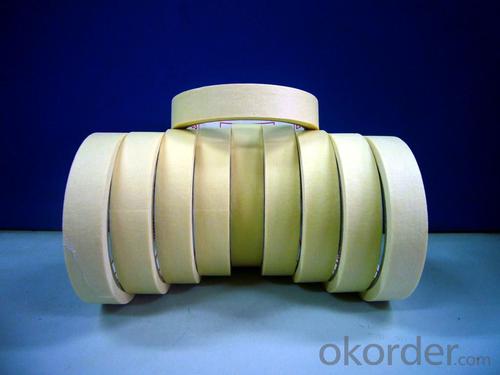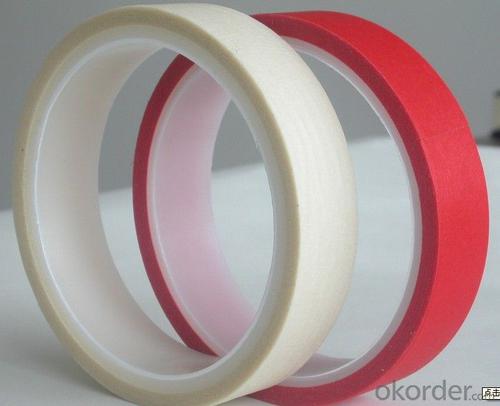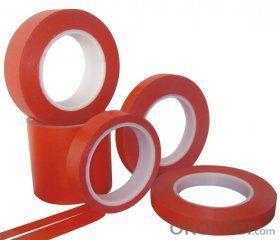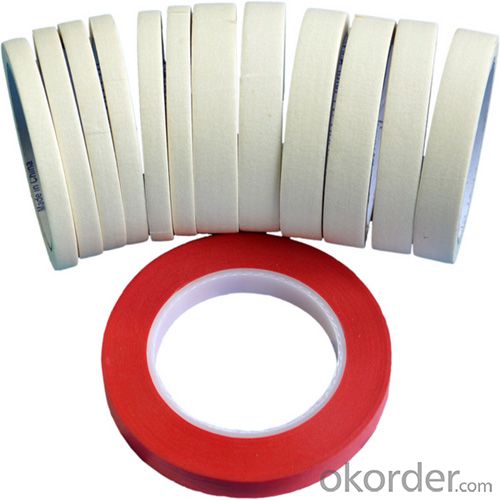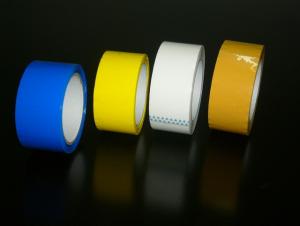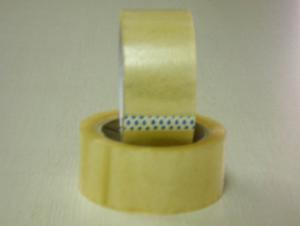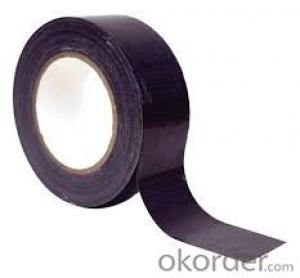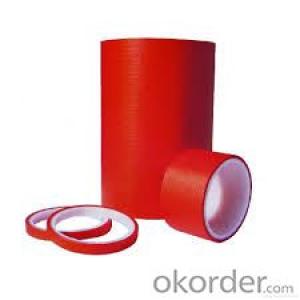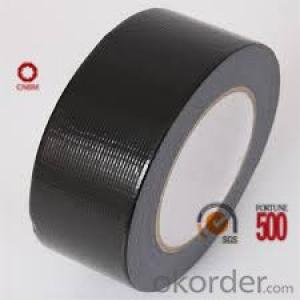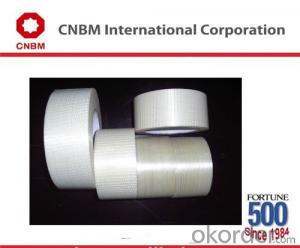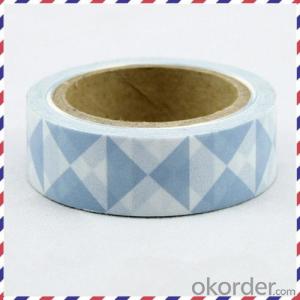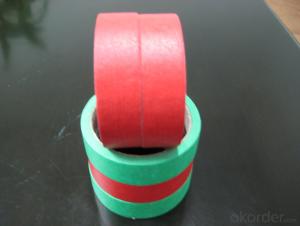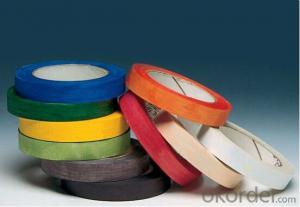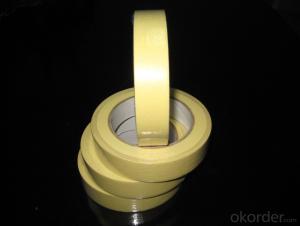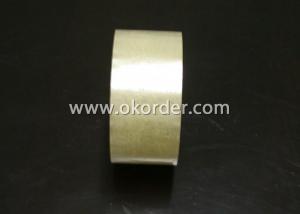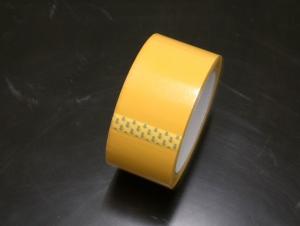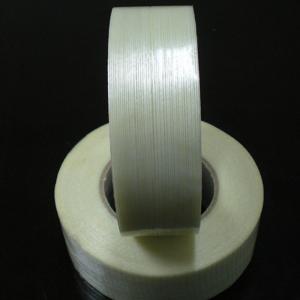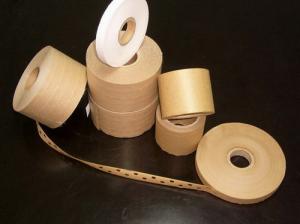Duck 240408 Standard Packaging Tape - Good Quality Chinese Manufacture Masking Tape
- Loading Port:
- Tianjin
- Payment Terms:
- TT OR LC
- Min Order Qty:
- 2500 roll
- Supply Capability:
- 50000000 roll/month
OKorder Service Pledge
OKorder Financial Service
You Might Also Like
General Information of Good Quality Chinese Manufacture Masking Tape
1. PACKING:
Core I.D.: 3” (76mm +/- 1)
Jumbo Roll:990mm x 1500m; 80 rolls/20' without pallets
Cut Roll: As per customer’s requirements; fistly several rolls shrink together, then certain quantities into a carton, finally be loaded into container with or without pallets.
2. Application:
Interior paint masking, silk screening, painting autos, boats, and Electrical industry.
3. Temperature resistance: 150C for 1 hour
4. Colors available: White, light yellow, yellow, blue, black, red, green etc.
5. We could supply OEM service such as core printing with customer's LOGO; round label with design of customers etc.
6. Special requirements will be satisfied after communications.
Technical Data of Good Quality Chinese Manufacture Masking Tape
CONSTRUCTION:
Carrier: Crepe Paper
Adhesive: Water acrylic adhesive
TYPICAL PHYSICAL PROPERTIES of Good Quality Chinese Manufacture Masking Tape
Total Thickness (adhesives + carrier): 160 +/- 5 micron
Initial Tack (steel ball): 16#
180O Peel Adhesion (to steel): 5 +/- 0.5N /25mm
Holding Power: 4 hrs
Tensile Strength: 65 +/- 5 N/25mm
Elongation: 10%
Temperature resistance: 150℃ for 1 hour
Remarks of Good Quality Chinese Manufacture Masking Tape
The data above are typical results and subject to change without notice.
Tolerance: Weight and Thickness: ±10%; Width: ±3mm;
Length: Cut Roll & Log Roll ±0.3m, Jumbo Roll ±0.5%.
The products should be stored at room temperature and be kept away wet and/or heat source.
It is essential, as with all pressure-sensitive tapes, that the surface to which the tape is applied must be clean, dry, and free of grease and oil.
The users should take test and do trial-application on the above products before coming into application so as to witness and ensure suitability for their special purpose and technique.
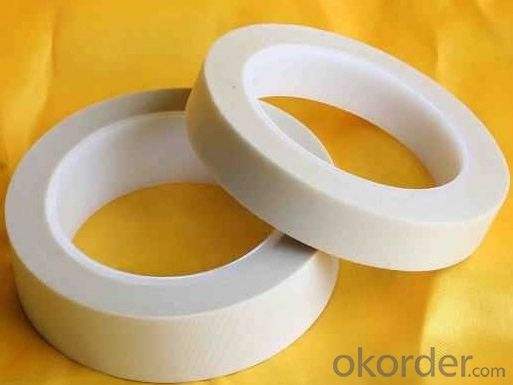
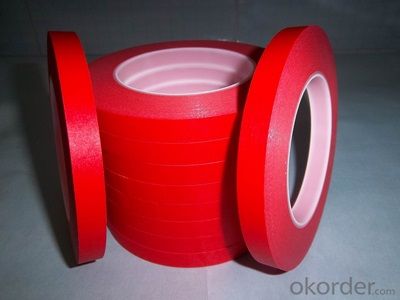
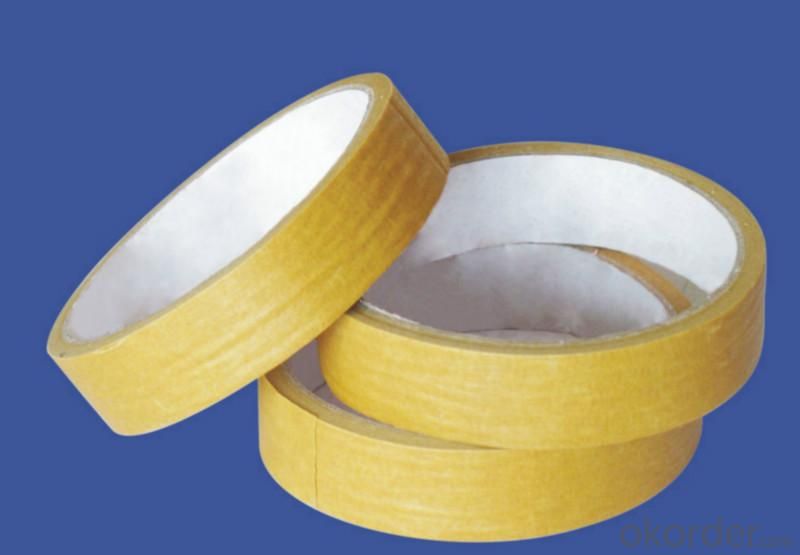
Advantage:
We are a factory professional in masking tape
Factory direct sales,professional production,quality assurance
Delivery in time,and any question will be replied in 24 hours
FAQ:
F: What is the MOQ (minimum order quantity) of your products?
A: USD3000 as MOQ. If you need less, we will charge some handling charge to keep cost balanced.
F: What sizes can you supply for the tapes?
A: We can supply jumbo roll, log roll and slitted rolls. For different items, the standard sizes are different. Please refer to our product details.
F: Could you deliver door to door?
A: Normally, for sea shipments, we only deliver to the destination port; and clients should make the Custom clearance. For air shipment, we can delivery the goods to door if client choose to send by courier.
- Q: Can scotch tape wrap wires?
- No, it's not safe. We should use electrical tape. We have a lot of transparent tapes for the last time
- Q: Can packaging tape be used for sealing plastic tubing?
- Yes, packaging tape can be used for sealing plastic tubing. Packaging tape is designed to provide a strong and secure seal on various surfaces, and it can adhere well to plastic materials. However, it is important to consider the specific application and requirements of the plastic tubing. If the tubing is meant to contain liquids or gases under pressure, or if it requires a more permanent and durable seal, it may be more appropriate to use specialized sealing methods such as heat sealing or using specific types of adhesives designed for plastic materials. Ultimately, the suitability of packaging tape for sealing plastic tubing depends on the specific circumstances and requirements of the application.
- Q: How do I remove packaging tape without damaging the surface?
- To ensure the surface remains undamaged, adhere to these steps for removing packaging tape: 1. Commence by gently heating the tape with a hairdryer set on low. The heat will cause the adhesive to soften, facilitating easier removal. 2. Employ your fingernail or a plastic scraper to delicately lift one corner of the tape. Exercise caution to avoid employing sharp objects that might leave scratches on the surface. 3. Gradually peel the tape back at a 180-degree angle, applying consistent and uniform pressure. If the tape proves resistant, pause and subject it to additional heat to further soften the adhesive. 4. In the event any residue remains, employ rubbing alcohol or a mild adhesive remover. Apply a small amount to a soft cloth and gently rub the residue until it lifts away. 5. Once the tape and residue have been eliminated, cleanse the surface with a mild soap and water solution to eliminate any remaining adhesive or residue. Always remember to test any cleaning solution on a small, inconspicuous area beforehand to ensure it does not cause damage to the surface.
- Q: Can packaging tape be used for sealing packages with high-value contents?
- Yes, packaging tape can be used for sealing packages with high-value contents. However, it is important to ensure that the tape used is strong, durable, and tamper-evident to provide adequate security and protection for the valuable contents.
- Q: Can packaging tape be used for sealing packages with irregular or uneven surfaces?
- Yes, packaging tape can be used for sealing packages with irregular or uneven surfaces. Packaging tape is designed to adhere to various surfaces, including those that are not completely flat or smooth. Its adhesive properties make it effective in securing packages with irregular surfaces, ensuring they remain sealed during transit or storage.
- Q: Can packaging tape be used for sealing plastic shoeboxes?
- Yes, packaging tape can be used for sealing plastic shoeboxes. It provides a strong and secure seal, keeping the contents of the shoeboxes safe and protected.
- Q: Can packaging tape be used for packing fragile items?
- Yes, packaging tape can be used for packing fragile items. It provides a secure seal and helps to protect delicate objects during transportation or storage. However, it is recommended to use additional protective materials, such as bubble wrap or foam, to further cushion and safeguard fragile items.
- Q: Is packaging tape safe to use on delicate items?
- The safety of using packaging tape on delicate items varies depending on the type of tape and how it is applied. Certain packaging tapes are specifically made for delicate items, minimizing the risk of damage through features like low tack adhesive or gentle release properties. These tapes, commonly known as "low-tack" or "gentle" tapes, are often transparent. When using packaging tape on delicate items, it is crucial to apply it carefully and securely, avoiding excessive force or pressure. It is recommended to test the tape on a small, inconspicuous area of the item first to ensure it does not cause harm or leave residue. Moreover, it is advisable to wrap delicate items with protective materials like bubble wrap or tissue paper before applying the tape. This extra layer of cushioning and protection can be beneficial. If you are uncertain about the safety of using packaging tape on a specific delicate item, it is always best to consult with the manufacturer or seek professional advice. They can provide guidance on the most suitable packaging materials and methods to ensure the safety of your delicate items during transit or storage.
- Q: Can packaging tape be used for sealing plastic toolboxes?
- Indeed, plastic toolboxes can be effectively sealed using packaging tape. Specifically crafted to securely seal boxes and packages, packaging tape exhibits versatility by being suitable for various materials, including plastic. It delivers a robust and long-lasting seal capable of enduring regular handling and transportation. Nevertheless, for extended storage or heavy-duty purposes, it is advisable to opt for a more robust and specialized tape, like duct tape or strapping tape, as they provide enhanced durability and adhesion.
- Q: Is packaging tape resistant to oil or grease?
- Yes, packaging tape is generally resistant to oil or grease.
Send your message to us
Duck 240408 Standard Packaging Tape - Good Quality Chinese Manufacture Masking Tape
- Loading Port:
- Tianjin
- Payment Terms:
- TT OR LC
- Min Order Qty:
- 2500 roll
- Supply Capability:
- 50000000 roll/month
OKorder Service Pledge
OKorder Financial Service
Similar products
Hot products
Hot Searches

